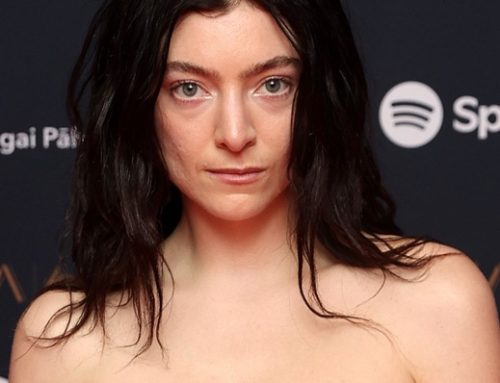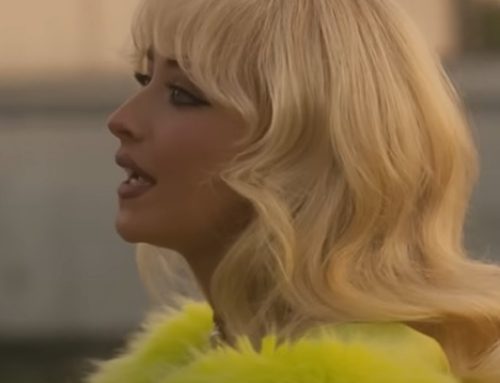As 1989 began, there was no question that Madonna was already a decade-defining superstar. But no one knew if she, like Bee Gees to the ‘70s or Beach Boys to the ‘60s, would prove a decade-constricted artist whose relevance would wane as a new decade turned over.
Like a Prayer, the magnum opus of her first decade and arguably her defining creative statement, came out 30 years ago today (March 21, 1989) and established that Madonna was not a pop star for her time, but for all time. And in the process, it gave us one of the most unlikely No. 1 smashes of her (or any career) and forced the world beyond her teenage fanbase to acknowledge her formidable vision.
Since history is written by the victors, Madonna maintaining her pop culture dominance well past the ‘80s seems like a historical inevitability these days. But in 1989, that was hardly the case. While she’d netted six Billboard Hot 100 No. 1s prior to Like A Prayer and released five smash albums (three studio LPs, a soundtrack and a remix album), her sound had remained decidedly of the era up until this point. Even as her subject matter deepened on 1986’s True Blue (dedicated to husband Sean Penn, from whom she’d file for divorce in Jan. 1989), the sonic palette was unmistakably ‘80s: bubbling dance-pop for the high-energy numbers, pounding beats and widescreen production for the ballads, and her voice only occasionally stretching for maturation (as on “Live to Tell”).
Not that there’s anything wrong with that. These were sounds that had served her Madgesty well for five years, and the three studio albums that precede Like a Prayer are unmistakable classics in their own right. But Madonna has always been a savvy tealeaf reader, and in 1989, she must’ve seen the wind of change coming. As she wrapped the decade and prepped her career for phase 2, Madonna moved in a direction that was simultaneously more ambitious and yet more traditional, pushing boundaries while courting an adult audience for the first time.
As the lead single and first track, “Like a Prayer” was the opening salvo that catapulted Madonna into a controversy she emerged virtually unscathed from. Although religious backlash to its Mary Lambert-directed video — which depicted white supremacists, cross burning and an erotic encounter with a saint in a dream — would push Pepsi to can an ad they’d already paid $5 million for, the wider world seemed to side with Madonna that her video was an artistic statement and its critics were mere pearl clutchers (not long after, however, the tide would start to turn against her when she began simulating masturbation in performances).
The song was a smash, becoming her seventh Hot 100 No. 1 (reigning for three weeks) and establishing that Madonna was capable of expanding her sound well past mall pop without sacrificing any of her commercial success. The structurally complex, multi-part epic melded an earnest Gospel choir, funk-pop riffage and searing guitar lines (some from Prince), culminating in a transcendent sing-along that established her as a pop chameleon, not just a Danceteria alumnus content to regurgitate old trends. The lyrics were similarly bold; by blurring the lines between the divine and the profane (“I’m down on my knees / I wanna take you there”), she began an unflinching conversation on human sexuality that would reach its apex in her ‘90s output.
The comparatively straightforward follow-up single “Express Yourself” — a buoyant, defiant declaration of self-worth — was certainly more in the dance-pop realm, but even here, the song is punctuated by irrepressible, warm Motown horns that throw back to an earlier era. Third single “Cherish” was similarly crafty. On its surface it reads like a frothy ‘80s pop tune, but its bones are in ‘50s doo-wop, and it contains a lyrical reference to The Association’s 1966 hit “Cherish.” Both singles sounded contemporary and were still aimed at the youth market, but they existed within a context the previous generation would understand and appreciate as well.
This move past dance-pop and synthpop (for the time — she would return to both at points) was hugely important for Madonna in 1989. Around that period, if you wanted to be taken seriously by your industry peers and the critics, you could make pop, sure — but it had to be grown-up pop with elements of genres the powers that be did take seriously, i.e., guitar rock, Motown, Gospel, baroque pop. And she did. She expertly stretched into the latter genre with “Promise to Try” and the stately-yet-personal “Oh Father,” a solemn ballad about her life after the loss of her mother at age five. The fact that “Oh Father” became her first Hot 100 hit since “Holiday” to miss the top 10 really didn’t even matter (it peaked at No. 20); with this song, Madonna established herself as a serious balladeer who could tackle cross-generational, mature material, and that opened numerous doors for her in the ‘90s.
The rest of the album, easily her most eclectic up until that point, flirted with a variety of flavors befitting a pop star looking to establish their versatility: “Dear Jessie” is nursery pop/psychedelia for co-writer Patrick Leonard’s daughter; “Keep It Together” is hard-slamming ‘70s R&B influenced by Sly Stone; “Spanish Eyes” is her Flamenco-tinged lament to those lost in the AIDS epidemic; “Till Death Do Us Part” is a harrowing account of domestic violence set, unexpectedly, to an anxious bubble of runaway synths; and the impact of Prince is all over their funky, slow-grinding not-a-love-song love song “Love Song.” He also pops up for album closer “Act of Contrition,” which is built around one of his guitar solos and segments of the gospel choir played backward. As these noisy tape loops build to an unsettling climax, Madonna retices the Catholic prayer of repentance, but loses her way before finishing it, veering from the sacred to the secular with a full-throated rant about a lost restaurant reservation — and just before it ends, Prince’s guitar noodles off into the stratosphere.
It’s a strange, arty way to end an album, and a far cry from the crystal-clear message of “Love Makes the World Go Round” that Madonna used to wrap True Blue, her previous studio album. But that’s the point. Here is where Madonna planted her flag not just as a superstar but as an Artist, someone willing to take risks, push into unmined territory and still come out with a chart-topper, two No. 2 hits and the best reviews of her career up until that point. With callbacks to previous eras and forays into revered genres, Madonna began to expand her fanbase into the ‘adult pop’ realm without sacrificing her youth culture bona fides.
It was a deft balancing act, and one that certainly couldn’t last forever, but on Like a Prayer, Madonna established that she was a pop star who happened to come from the ‘80s, not a product of the ‘80s — and that she would remain relevant long after her peers faded into memory like a Rubik’s Cube or Teddy Ruxpin.





















